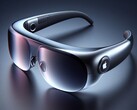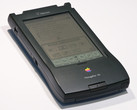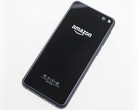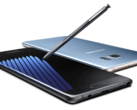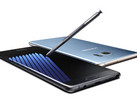1. Apple Newton – Too advanced for its time
The Apple Newton, released in 1993, was an early form of the modern smartphone. Despite its current reputation as one of technology's notable missteps, the Newton was groundbreaking for its era. The Newton's standout feature was its handwriting recognition software, a bold attempt to translate user handwriting into digital text. However, this feature didn't work very well. Often, it misunderstood the writing, leading to funny mistakes.
Physically, the Newton was also quite big and expensive, costing between $699 and $1,000, which would be around $1,200 to $1,700 today. Despite its cutting-edge features and Apple's reputation for innovation, the Newton failed to resonate with the consumer market. This lack of consumer adoption led to its discontinuation in 1998. Yet, it's undeniable that certain elements of the Newton laid the groundwork for features we see in Apple products today. It even had a basic version of a digital assistant, similar to what Siri is now.
Interested in delving deeper into the evolution of digital assistants like Siri? Consider exploring the book “Talking to Siri: Mastering the Language of Apple's Intelligent Assistant” currently available on Amazon.
2. Amazon Fire Phone - From high hopes to 99 cents
Amazon's venture into various tech products has been a mix of hits and misses. Amazon's 2014 Fire Phone was an ambitious entry into the smartphone market, featuring a novel 3D interface and integration with Amazon's services. However, it failed to compete with industry leaders like Apple and Samsung. The 3D interface was seen as a gimmick, and the device's limitation to Amazon's app store, which offered fewer options compared to Google Play and the Apple App Store.
The Fire Phone's high pricing strategy did not resonate with consumers. This led to drastic price cuts, with the Fire Phone eventually selling for just $0.99. Still, Amazon ended up with $170 million worth of phones that nobody bought. This led Amazon to discontinue the Fire Phone just a year after its launch, marking an end to the company's solo venture into the smartphone arena.
3. Samsung Galaxy Note 7 – The phone catching fire left and right
In 2016, Samsung released the Galaxy Note 7, which people initially liked because of its great features and design. However, this positive reception quickly turned sour as users began reporting incidents of the devices catching fire. Investigations pinpointed the root cause as a defective battery design, prone to short-circuiting and combustion.
Samsung tried to fix the problem by recalling the Note 7 and giving out new phones. However, the new phones had the same issue. This problem cost Samsung a lot of money and hurt its reputation. Ultimately, Samsung made the decision to completely halt production of the Note 7, sealing its fate as one of the most infamous technological failures in recent history.
4. Nexus Q - Google's shortest-lived product ever
Despite Google's status as a titan in the tech industry, not all of its ventures have been successful. Among these, the Nexus Q stands out as a particularly notable failure. The device was designed with a clever concept, acting as a bridge between a phone or tablet and a home entertainment system. Users could connect their devices to this spherical hub, stream content to the cloud, and enjoy media from YouTube and Google Play Music on their home systems.
However, the Nexus Q was a commercial disaster, largely due to its prohibitive pricing. The cost of the unit itself was $299, and this was just the beginning. Adding in $399 for the accompanying speakers and another $49 for official cables brought the total to nearly $750. While this price point is not unusual for high-end home entertainment equipment, many consumers felt the Nexus Q did not offer value for money. This sentiment was made worse by the device's limited compatibility with only Google-owned apps, excluding popular services like Netflix, Hulu, and Spotify. This lack of versatility was a critical drawback, as users couldn't access their favorite content if it wasn't available on Google's platforms. Ultimately, despite its potential, the Nexus Q's high price and restrictive nature sealed its fate as one of Google's most significant missteps.
Source(s)
Photo by Markus Winkler on Unsplash





